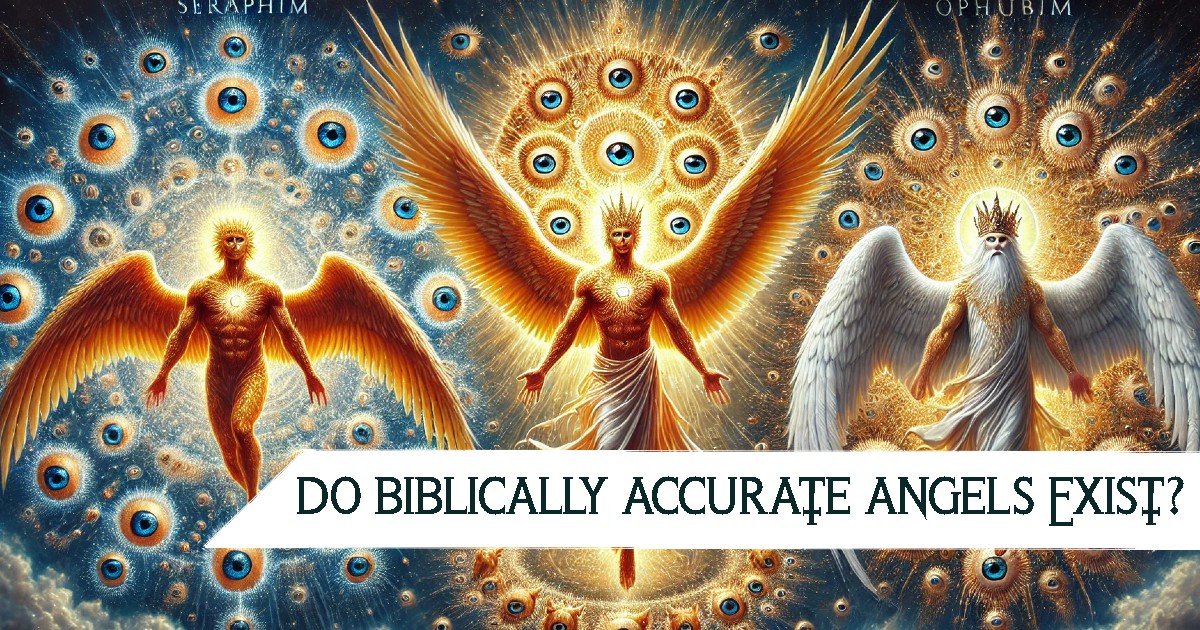In evangelical theology, angels are considered real, supernatural beings created by God to serve as His messengers and protectors of humanity. They are often depicted as divine warriors, guardians, and intermediaries between God and people, with stories of angelic encounters found throughout both the Old and New Testaments.
However, when we explore historical records and ancient manuscripts, the narrative around angels becomes far more complex.
Evidence That Challenges the Traditional View:
- Cultural Borrowing: The concept of angels predates Christianity and Judaism, with similar beings appearing in earlier mythologies like the Zoroastrian Amesha Spentas and Mesopotamian winged spirits. This suggests that angelic beings may have evolved from older mythological archetypes.
- Inconsistent Biblical Descriptions: The Bible offers vastly different portrayals of angels. Some are humanoid, others have multiple wings and eyes, and beings like cherubim and seraphim differ significantly from the popular image of winged, human-like figures.
- Late Development in Jewish Thought: Early Jewish texts, like the Torah, mention angels sporadically and without much detail. It’s in later apocalyptic literature (e.g., the Book of Daniel, written during the Hellenistic period) that angels like Gabriel and Michael become prominent figures.
- Symbolic Interpretations: Some scholars argue that angelic appearances in the Bible serve more as literary or symbolic devices rather than descriptions of actual supernatural beings, representing concepts like divine will, guidance, or judgment.
- Absence in Early Christian Writings: Early Christian texts outside the canonical New Testament, such as the Didache, focus more on Jesus’ teachings and less on angels, suggesting that angelology became more elaborate in later Christian theology.
What Do These Evidences Reveal?
The historical and textual evidence suggests that the idea of angels has evolved over time, influenced by earlier mythologies, changing religious contexts, and literary traditions. Rather than being universally consistent beings, angels appear as diverse symbols shaped by the cultures and eras in which they were written about.
Insights from Ancient Manuscripts:
- Dead Sea Scrolls: These texts reveal a complex angelology among certain Jewish sects, including named angels not found in the Hebrew Bible, showing how beliefs evolved between the Old and New Testament periods.
- Book of Enoch: A non-canonical Jewish text that expands dramatically on angelic hierarchies, introducing the concept of fallen angels and detailed descriptions of their roles, influencing early Christian thought.
- Nag Hammadi Library: Early Christian Gnostic texts depict angels differently, often as cosmic rulers or archons, reflecting a blend of Jewish, Christian, and Hellenistic ideas.
Summarizing the Findings:
While evangelical theology presents angels as consistent, divine messengers, historical evidence points to a more fluid and evolving concept. The diversity of angelic portrayals across different cultures, religions, and time periods suggests that angels may be more of a symbolic and mythological construct than universally experienced supernatural beings.
Sources:
Academic:
- Pagels, Elaine. The Origin of Satan.
- Goodman, Martin. Angels: A History.
- Collins, John J. The Apocalyptic Imagination: An Introduction to Jewish Apocalyptic Literature.
Ancient Manuscripts:
- The Book of Enoch
- The Dead Sea Scrolls
- The Nag Hammadi Library

